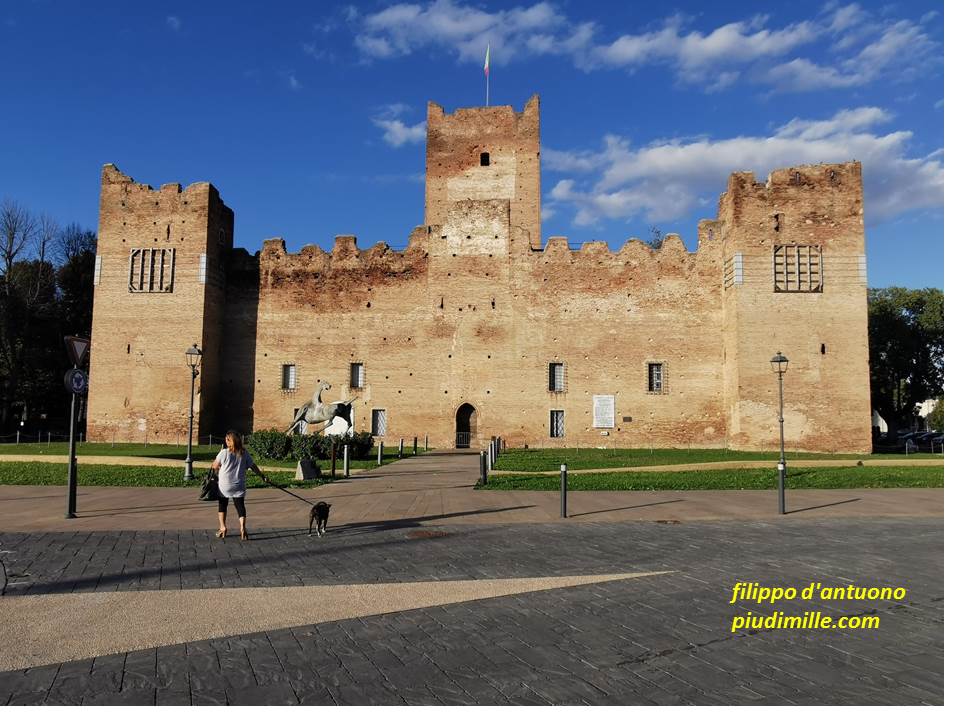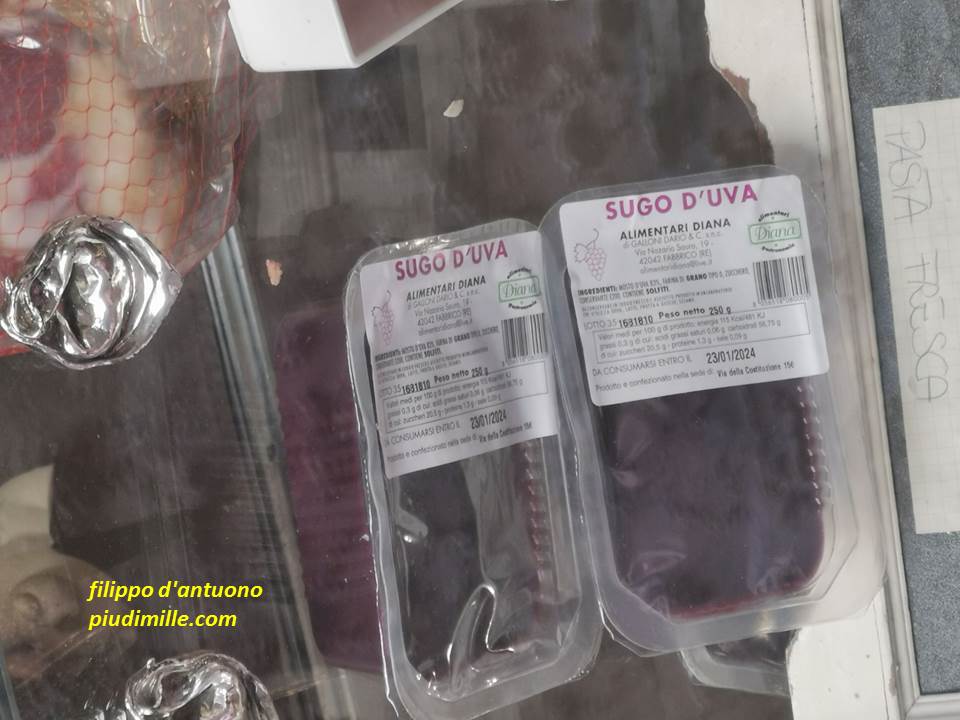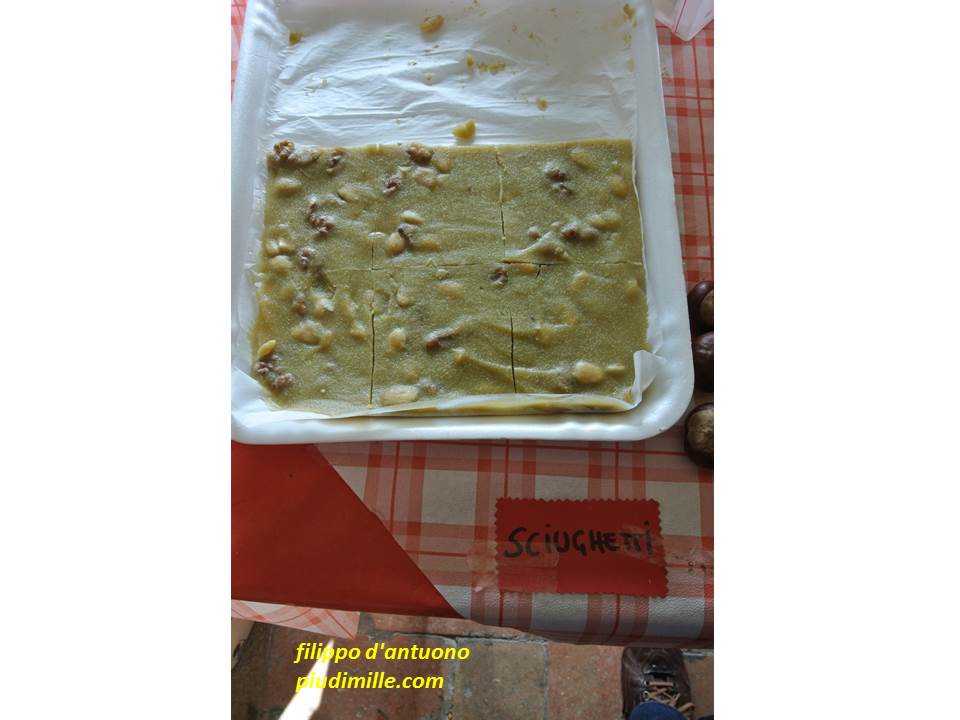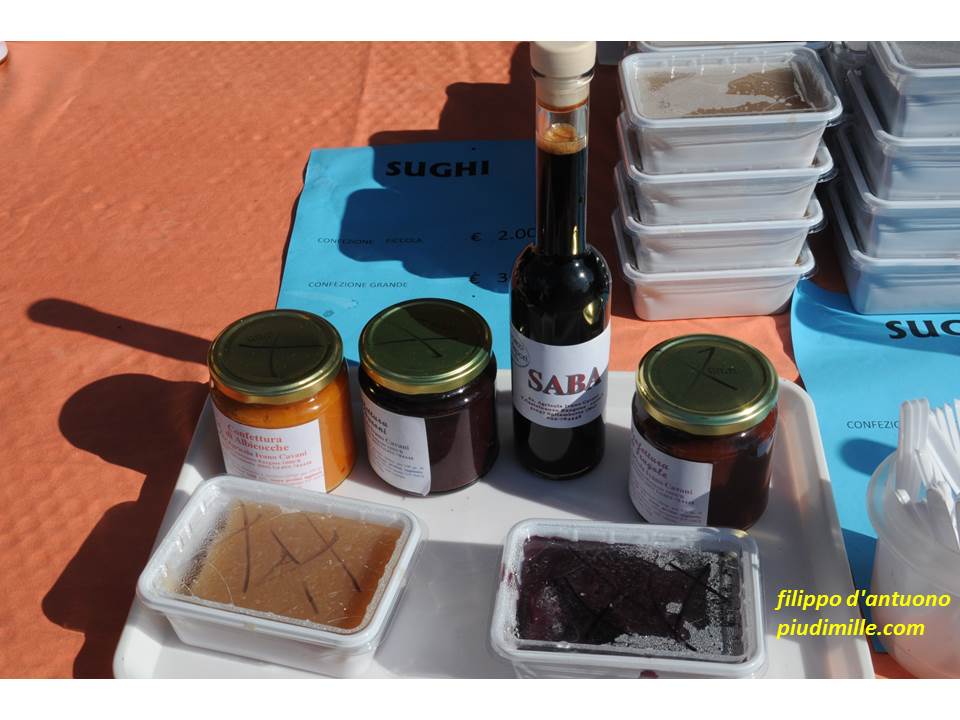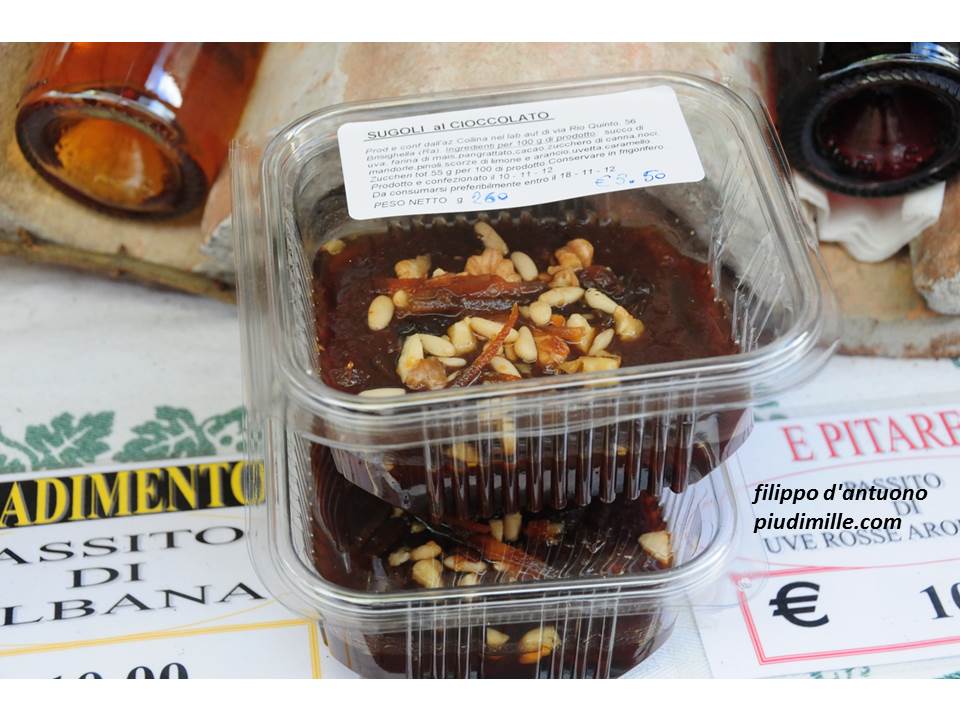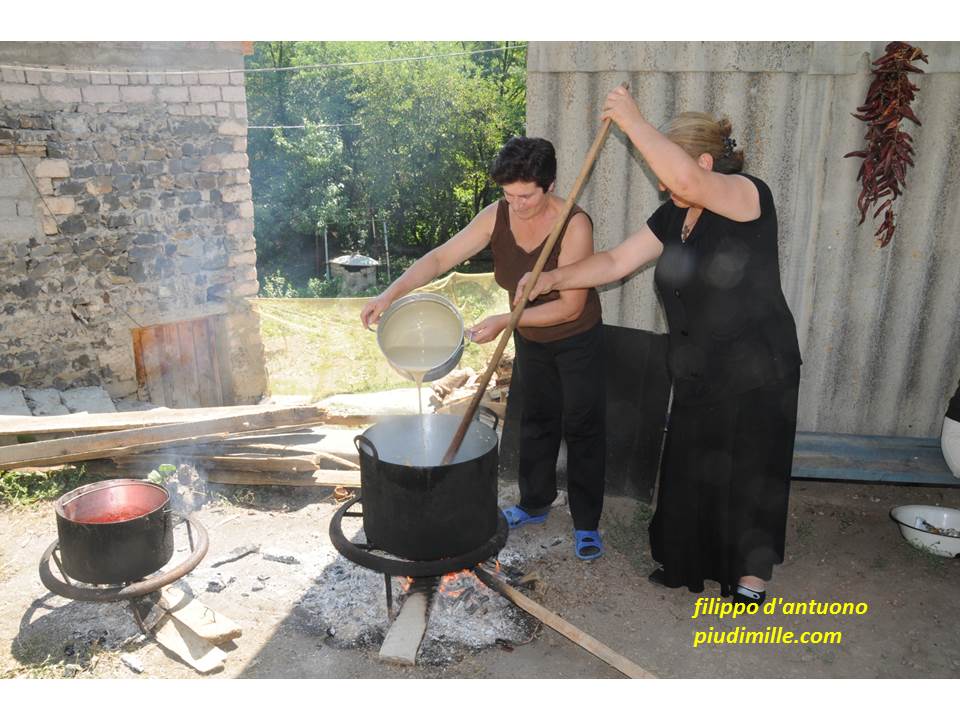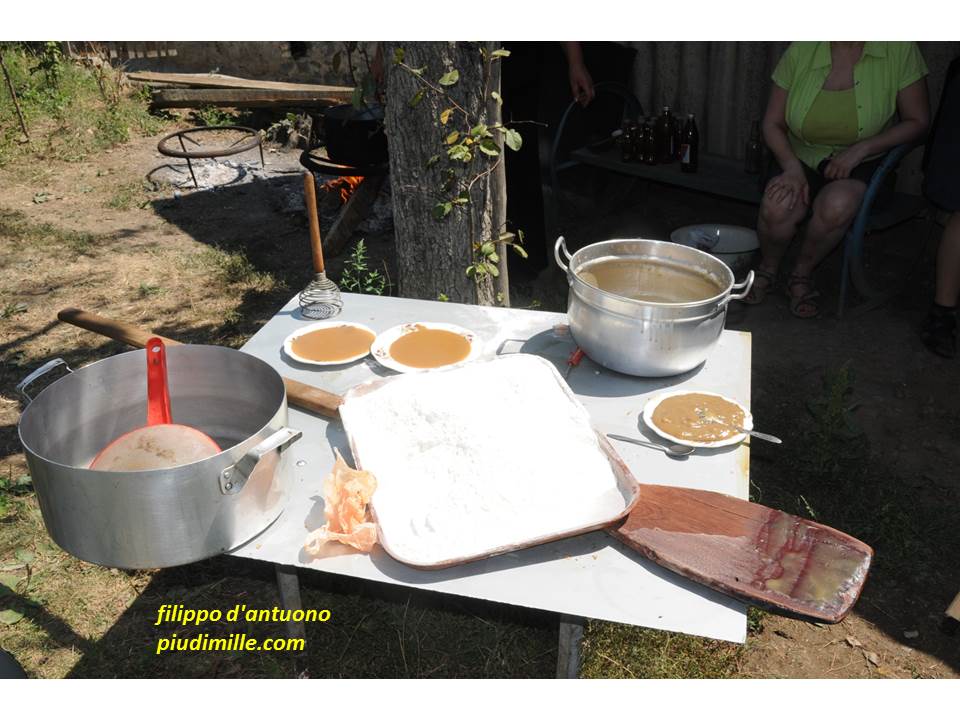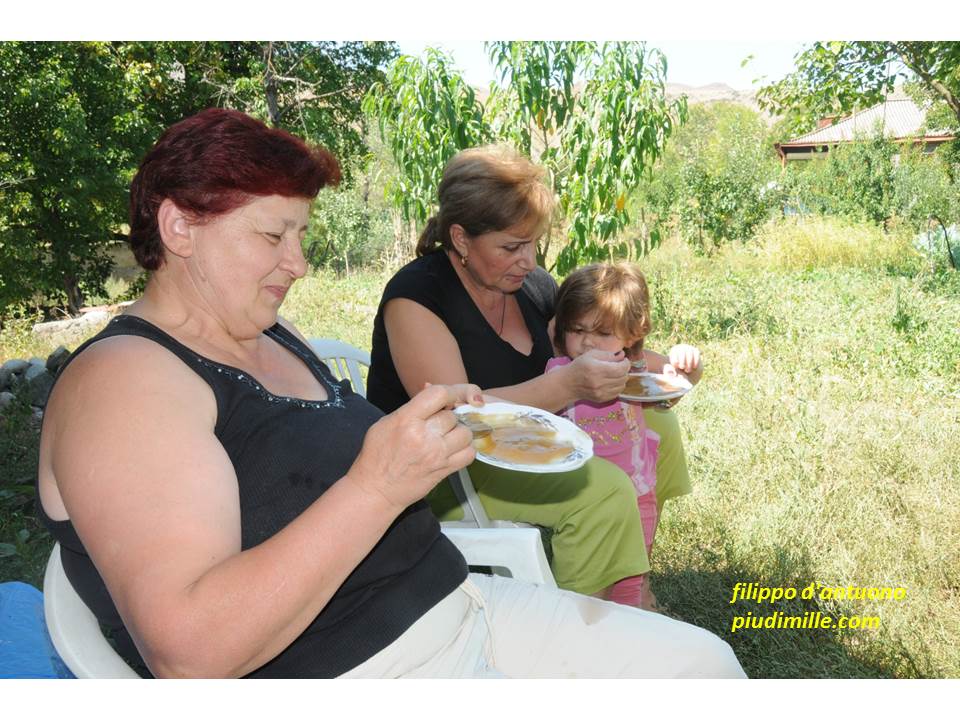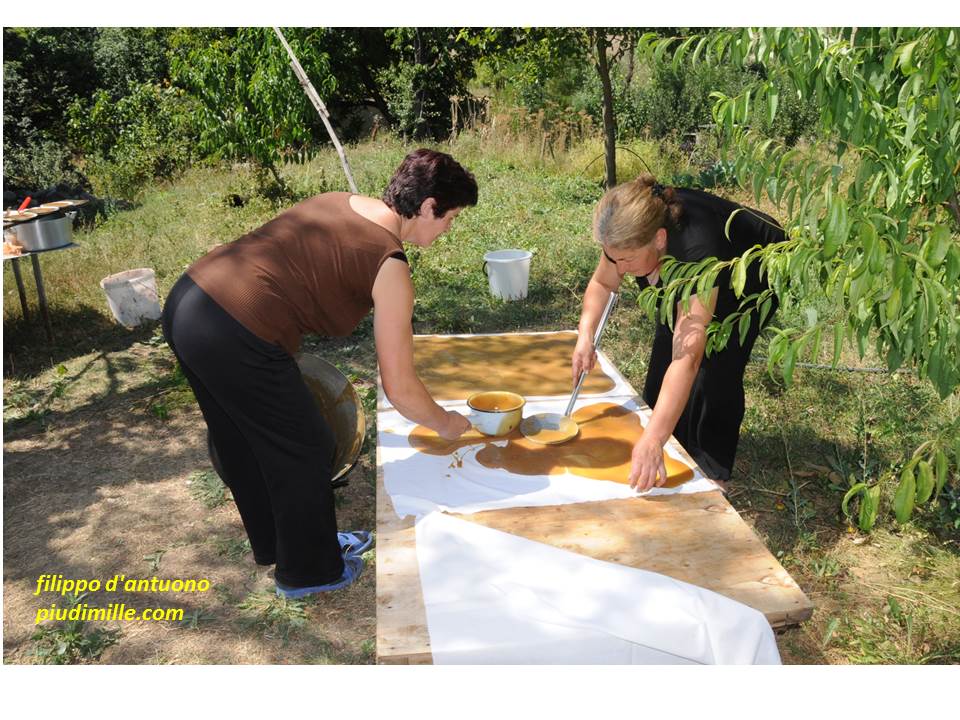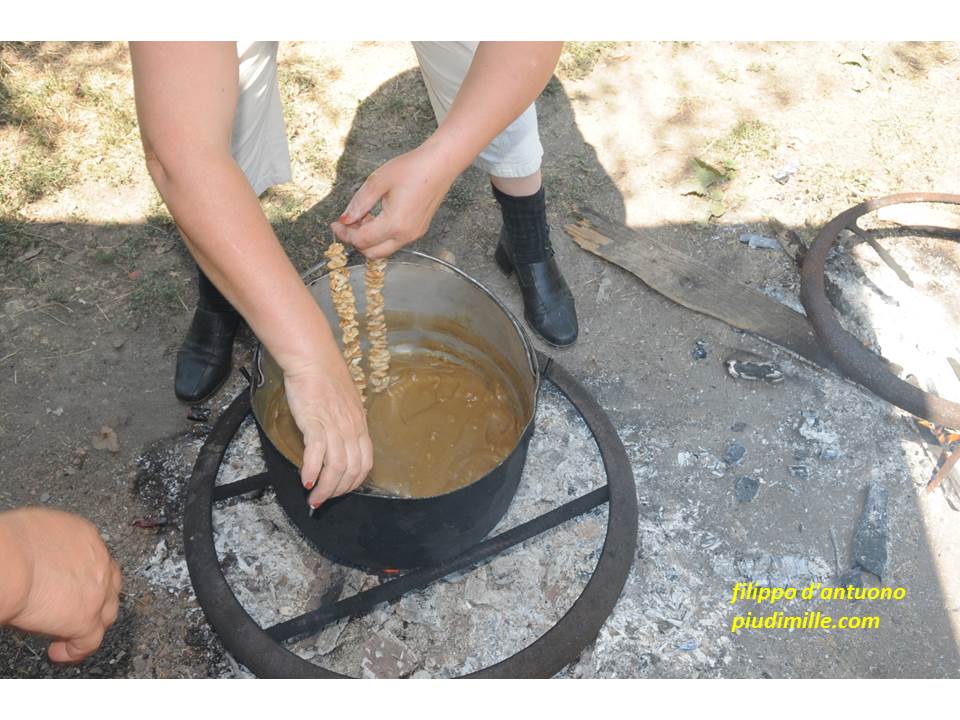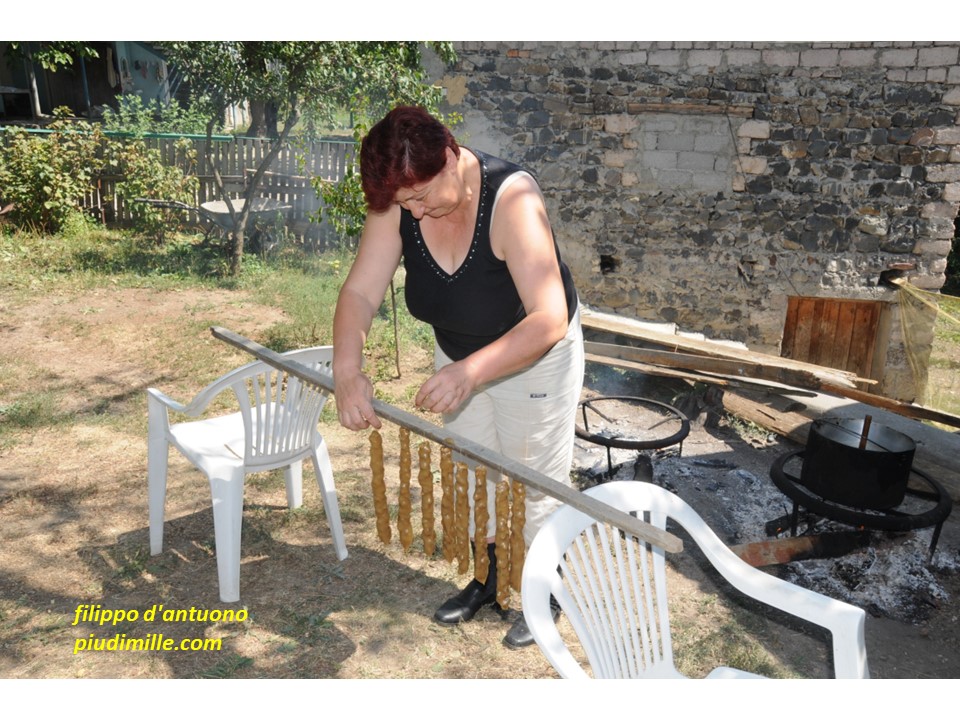Stories of grape “sughi” and other preparations
A trip starting from grape “sughi” and going far
November 19th, 2023
A premise
During the last period I travelled few times across the Emilia plain. But, only to reach places, without stopping, unless for too short time: it’s a pity. We, who use to roam the mountains, often under-evaluate the great plains, but we are wrong. Just, as an example of what we could miss, to quick pictures, taken with my mobile, of Reggiolo and Carpi.
Well it was period of grapes and I found again the “sughi”. Not only this product reminded me things of long time ago, but also represented an occasion for thoughts, comparisons, considerations, as it can happen with most traditional foods.
First of all, “sughi” are made of grape juice, concentrated by boiling, to which flour is added; more or less when boiling is resumed, the compost is removed from fire and left to cool down and thicken. The “sughi” have been for long time the typical sweet of grape harvest period.
What are the Italian sughi
So, I found again the grape “sughi” and, as it was normal to do, I bought some.
The following conversation with the lady at the shop was incautiously taken by me on the ground of: “These sughi are made of red grapes…”. And the answer was rather peremptory: “Of course, sughi are not made with white grapes!”.
Just on the spot, as obviously I said nothing, since the lady’s statement was true: in that place, as a matter of fact, sughi are from red grapes. And that’s all.
But then I resumed what was already in my memories. I remembered grape sughi also made from white grapes. And, indeed, see some other images, with a variety of situations. Sughi made from white and red grapes, using either wheat or corn meal (e.g. the “sciughetti”, from the Marce region), more complex sughi, also containing dried fruits or chocolate. Then, local variations of names: sughi, sciughetti, sugoli and, for sure, much more could be added.
These simple notes already allow drawing some considerations.
The “sughi” represent a typical example of traditional foods. They used to be prepared using what was available: red grapes, ok; white grapes, ok, as well. Wheat flour… yes, but, in case it was scarcely available, corn flour was good, as well. In case something else was available, to enrich the preparation, why not to add it? So, as for many other traditional foods, the “true” sugo does not exist. Or, better, all kind of “sughi” are the true ones, in the sense that all were obtained making use of the available resource; all of them served to vary the diet, and to introduce some affordable notes of pleasure.
Travelling in space, other cultures, similar products
Starting from these points, I went a bit back, to the period I travelled in the Caucasian area, in Georgia and Armenia. There, a series of foods closely related to our “sughi” were actively maintained, even if I was not there during the period of grape harvest.
Pelamushi
Let’s start with Georgian pelamushi. Here we see the one made from white mulberry fruits, and wheat flour. In this specific case, dried mulberry fruits were used, rehydrated in abundant water, before boiling. But, in the period of grape harvest, grapes are, without any doubt, the main ingredient. Corn meal is mainly used in western Georgia, wheat meal, in eastern Georgia.
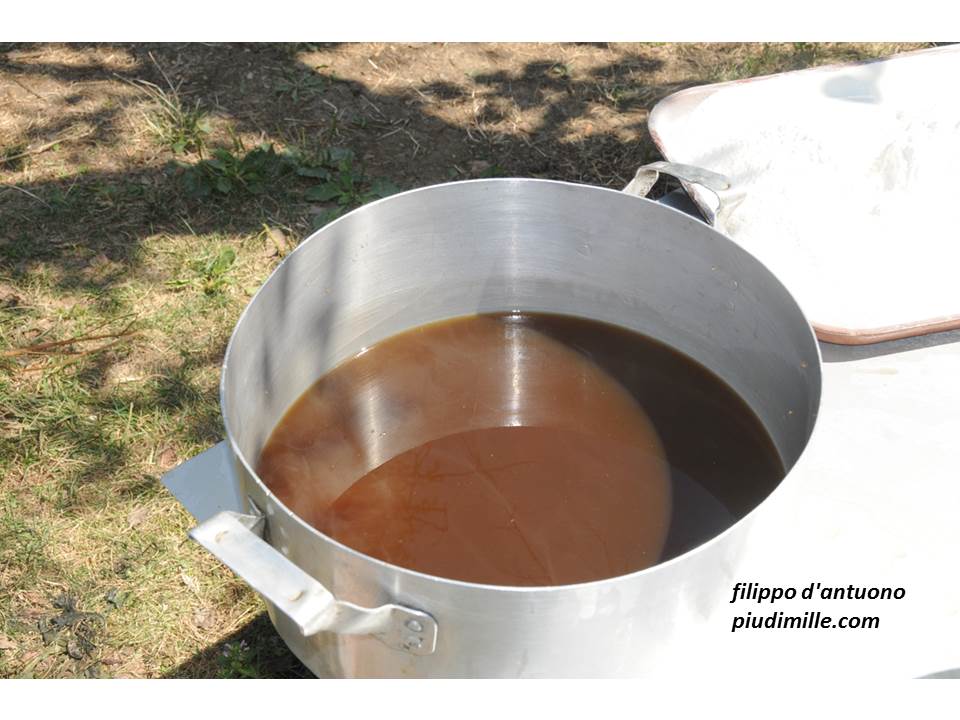
The concentarted white mulberry juice, used for the preparation of pelamushi. Aspindza, Georgia.
Consider however that the procedure to prepare pelamushi is time consuming. At first, the fruit juice must be obtained, that is then concentrated by boiling. Then, the flour is added, to obtain a hot and viscous mass. At this point, after so much work, it is not worth to only make pelamushi. Beter, the pelamushi becomes a kind, of secondary product, with respect to the following two.
Tkhlapi
When the hot paste is spread in thin layers, then let to dry, special sheets are obtained, that may be kept for long time. These are called Tkhlapi and can be produced using different fruits. When pectine-rich fruits are used, which juice naturally thickens well, there is no need of adding flour to make tkhlapi. Tkhapi are these wonderful, coloured, fruit sheets, also called “fruit leather”, that can be seen in all the Georgian and Armenian markets, as well as in markets of other places where I did not have the occasion to go. In Armenia are called Ttu lavash (sour lavash): lavash is indeed the name of a flat, very thin, bread… but here we should stop.
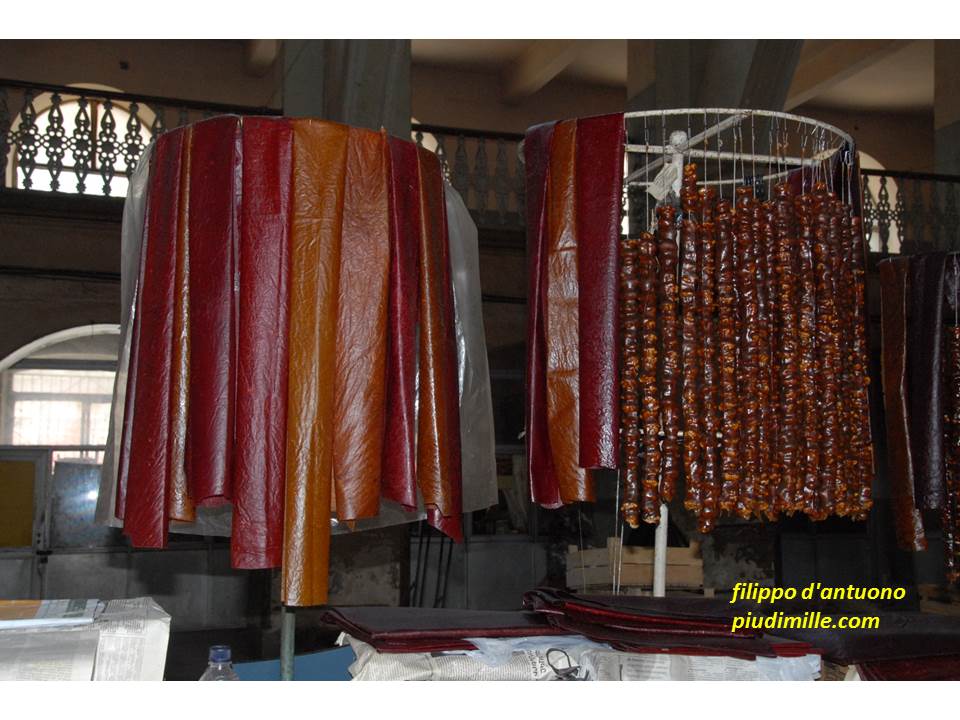
Sheets of ttu lavash (fruit leather, the equivalent of tkhlapi in Armenia), from various fruits, but prepared without flour, Mashtots market, Erevan, Armenia.
Churkhela
There is then churkhela. Strings of walnuts (or other nuts) are prepared, and then immersed, in several times, into the hot paste made of concentrated fruit juice and flour. Then the strings are hung to dry.
Tkhlapi and churkhela can be preserved for several months. Nowadays they are considered a kind of sweets, or candies, still very popular everywhere; sometimes, they are also touristic attractions. Until not so long ago, they were instead highly energetic foods, easily storable and transportable: resources to be used year-round.
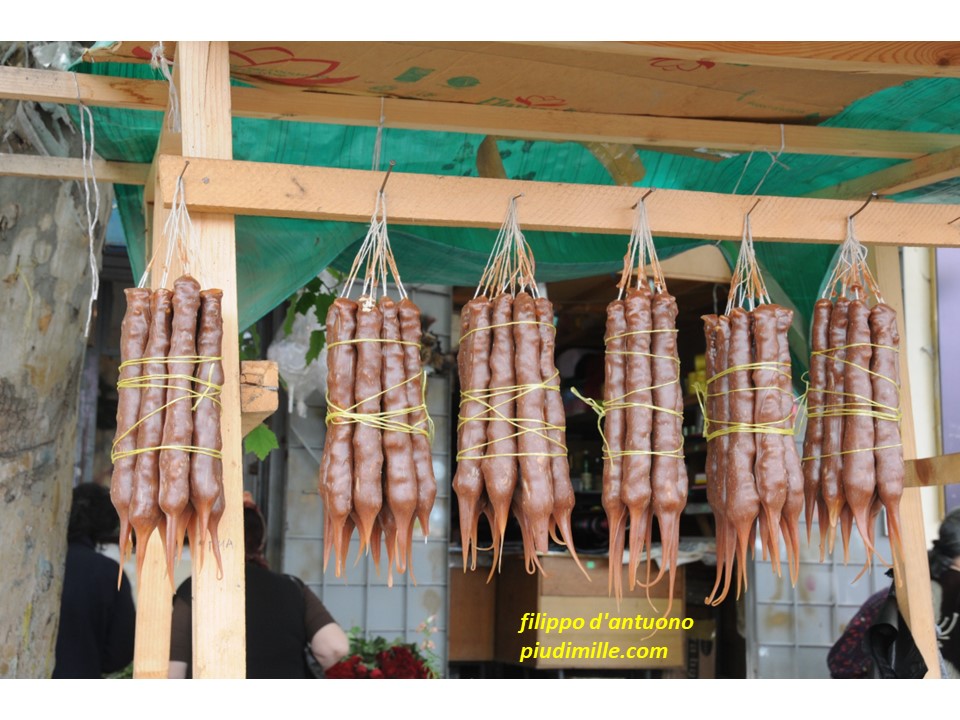
Churkhela on sale, at the Tbilisi railway station market, Georgia
To conclude
Well, just try to come to some conclusions. It is very interesting to note how, despite food parochialism, local resources and nutritional needs determined the manufacturing of almost identical food preparations, in geographically very distant places. And this was only one example. There is a common thread connection all this. To be able to see the world, and things, with own eyes, one should be able to travel, by travel freely, from either constraint and prejudice. And out of the organised touristic packages than make everything trivial. But, to do that, we need safety and, by consequence, peace.
This is a bit my recurring idea: that traditional foods can be peace messengers. Let’s admit that this is for sure an idea substantially far from current reality. But, never know, why to lose hope…
Grape “sughi” and pelamushi
Filippo D’Antuono – piudimille.com
all right reserved

